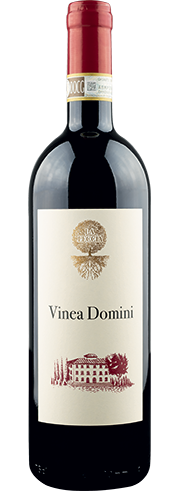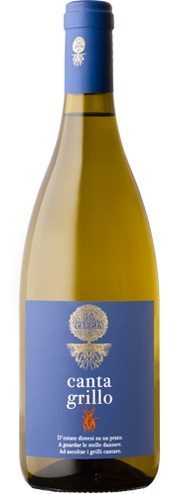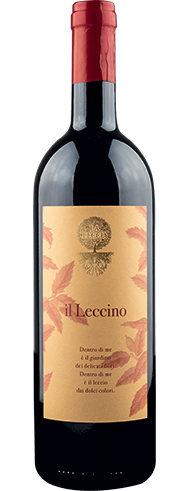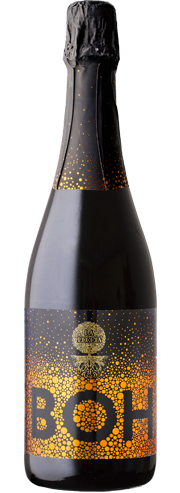- About us
- Company details
The history of La Leccia is essentially the story of a family and its vineyards, located on the hills of the Val di
Botte, near Montespertoli. A story that comes from the depths of this land. An agricultural reality
supported and developed by the Bagnoli family who, with passion, humility and enthusiasm, has chosen to
protect and enhance this small portion of the Chianti area.
From the 2019 vintage, La Leccia will be a certified organic company. This important
milestone is accompanied by the commitment to maintain the natural balance of the vineyard, both by
minimizing work with machinery and by protecting biodiversity. A possible condition thanks to the
conformation of the estate, surrounded by the owned wood that allows you to keep the environment well
preserved and intact.
Year of establishment:
2012
Number of employees:
FROM 3 TO 9 EMPLOYEES
Annual turnover:
Under 250.000 Euro
Reference year of turnover:
2019
Export turnover:
0
Activities:
Growing of grapes
Manufacture of wine from grape
Manufacture of wine of fresh grapes, other than sparkling wine and other special wines
Manufacture of sparkling wine and other special wines
- Contact Information
- Business Proposals
Company:
FATTORIA LA LECCIA SOC.AGRICOLA
Web site:
Address:
VIA LORENZO IL MAGNIFICO 14
City:
MONTESPERTOLI FIRENZE (FI)
Zip Code:
50129
E-commerce:
Social media:
Tag:
No business proposals uploaded
- Map
Vinea Domini - Chianti Superiore DOCG

Vinification
The grapes are picked by hand during the coolest hours of
the morning, crushed and destemmed, and then transferred
into 30hl temperature-controlled stainless steel vats. Once
fermentation has started, the temperature is gradually
raised, up to a maximum of 28°C. Maceration is carried out
with daily brief pumping over of the must and délestage
for about 18 days. After devatting, the various parcels of
wine undergo malolactic fermentation separately before
being blended together and completing maturation in 7–8
months. This is followed by stabilisation and bottling, which
is carried out during the summer. Lastly, the wine is bottle-
aged for roughly 6 months.
Tasting notes
Its colour is an intense, bright ruby red, with brilliant purple-
tinged highlights. The nose is fresh, fruity and very precise;
one finds notes of ripe red fruits, raspberries and plums,
and delicate spicy hints of black pepper and liquorice. The
tannins on the palate are evident yet rounded, making the
wine extremely attractive to drink and persistent.
Serving suggestions
At a temperature of around 16°C, in moderately large glasses.
Food pairings
Ideal accompanied by non-fishy hors d’oeuvres and pasta
dishes, or grilled red meats.
Cantagrillo - Trebbiano Toscana IGT

Vinification
The grapes are ripened and some are allowed to partially
dry in the vineyard, using traditional techniques such as
‘’cutting the canes’’ and ‘’pinching the stems’’. Manual
harvesting takes place during the coolest hours of the
morning, and so the grapes are crushed and destemmed
and chilled immediately to 6°C using a heat exchanger.
Some of them are then taken to a press, where they undergo
cryomaceration for 24 hours prior to fermentation, while the
rest are introduced into a temperature-controlled tank and
subjected to a longer maceration, which lasts until the cap
of skins rises (3-4 days depending on the time it takes the
indigenous yeasts to develop). Subsequently, fermentation
takes place at a controlled temperature of 15°C. Roughly
half the production, on the other hand, carries out the
second phase of the alcoholic fermentation – and all of its
élevage – in barrels of different sizes (100 and 225 litres)
and of various botanical origins (oak, acacia, sour cherry
and mulberry), whilst the other half remains in stainless
steel and completes its maturation on its fine lees for 6
months at a controlled temperature of no more than 15°C.
In both cases, the wine is prevented from undergoing
malolactic fermentation. Finally, the operations of blending,
stabilisation and bottling take place, carried out roughly 10
months after the harvest.
Tasting notes
Its colour is a bright straw yellow with intriguing golden
highlights. The nose displays a marked mineral character,
against a background of fresh fruity notes (of citrus and
Golden Delicious apples) as well as delicate vanilla-like and
toasted hints. Attractive tones of officinal herbs and aromatic
Mediterranean essences complete its olfactory sensations.
On the palate one finds liveliness and freshness, supported
by a rounded flavour and an intense, tangy finish, typical of
the Chianti area.
Serving suggestions
At no less than 10°C.
Food pairings
Ideal as an aperitif or for accompanying all kinds of fish
and seafood dishes, but also with white meats and light hors
d’oeuvres.
Leccino - Sangiovese Toscana IGT

Vinification
L’uva viene rigorosamente selezionata e raccolta a mano
nelle ore più fresche della mattina, pigiadiraspata e condotta
in tini di acciaio inox termocondizionati. Dopo l’avvio della
fermentazione, la temperatura viene fatta montare a poco
a poco, fino ad un massimo di 30 °C dopo la chiusura
dell’attività fermentativa. La macerazione viene condotta
con operazioni quotidiane di rimontaggio breve e delestage
e dura circa 30 giorni. Dopo la svinatura i vini svolgono
la fermentazione malolattica separatamente, quindi iniziano
il percorso di affinamento in fusti di legno (barriques
da 225 litri e tonneaux da 500 litri di prestigioso rovere
francese, in parte nuovi, in parte di secondo passaggio),
che dura complessivamente 18 mesi. Seguono le operazioni
di assemblaggio, stabilizzazione ed imbottigliamento, che
viene effettuato nel periodo estivo.
Tasting notes
Il colore è rosso rubino intenso con robusti riflessi violacei;
profumo complesso e variegato, in cui si riconoscono note
di mora ed altri piccoli frutti neri maturi, tabacco essiccato
e piacevoli sentori di spezie dolci: liquirizia, vaniglia,
cannella, caramello. In bocca tannini consistenti e molto
fitti conferiscono volume, struttura, persistenza e grandi
prospettive di evoluzione.
Serving suggestions
Temperatura intorno a 18 °C in calici molto ampi.
Food pairings
Ideale per accompagnare i grandi piatti di selvaggina
arrostita e stufata della tradizione toscana, tutto da scoprire
come vino da meditazione.
BOH - Vino Spumante Sangiovese Toscana IGT

Vinification and
transformation into
sparkling wine
The grapes are picked earlier than usual and in the coolest
hours of the morning, in order to preserve their acidity.
They are then crushed and destemmed and immediately
chilled to a temperature of 6°C. They then undergo soft
pressing, without any maceration. The must thus obtained
is first subjected to static clarification at 4°C, then racked
and the solid matter removed; lastly, the fermentation
process is triggered off at a controlled temperature of 15°C.
The wine is then kept on its fine lees for 3 months at 10°C,
preventing the malolactic fermentation. This is followed
by the creation of the cuvée, a slow prise de mousse in
pressurized tanks (using the “Charmat lungo” method
with prolonged maturation on the yeasts), stabilisation and
bottling. This last operation is carried out roughly 6 months
after the prise de mousse.
Tasting notes
Its colour is a bright pale pink, reminiscent of peach
blossom, with vibrant, gleaming highlights.
The dense and persistent perlage is characterized by a very
white mousse that evaporates in the glass in a gradual and
elegant manner. On the nose one finds very intense, inviting
aromas of fresh fruit, such as peach, wild strawberry and
ripe papaya. Great freshness, liveliness and creaminess are
highlighted on the palate, along with a tangy finish and an
attractive harmony between its various components.
Serving suggestions
The optimum temperature is 4°C, in flute glasses.
Food pairings
Ideal as an aperitif and for accompanying all kinds of hors
d’oeuvres, whether meat-, vegetable- or fish and seafood-
based.


